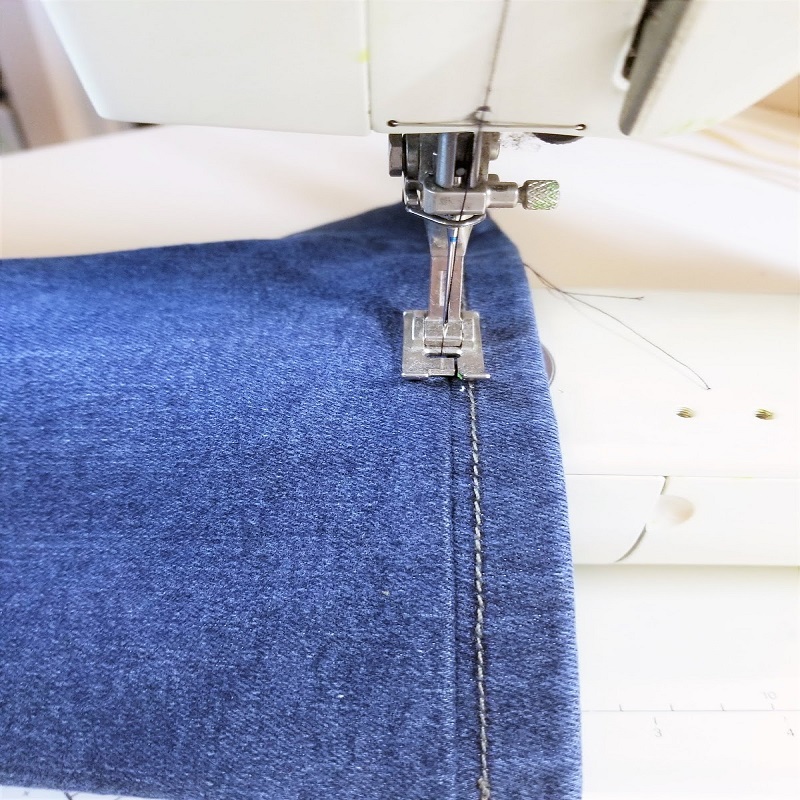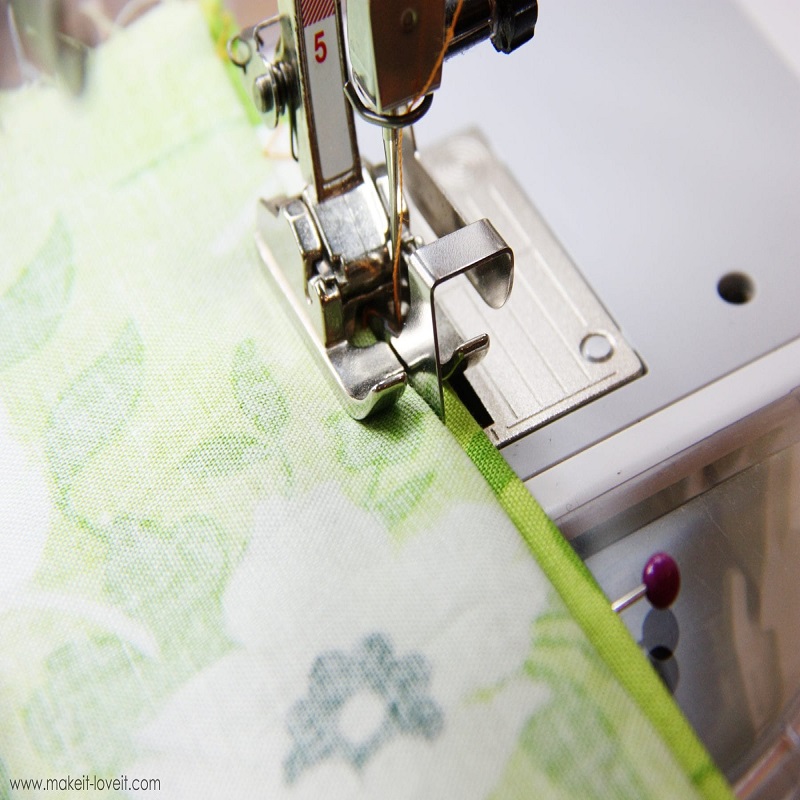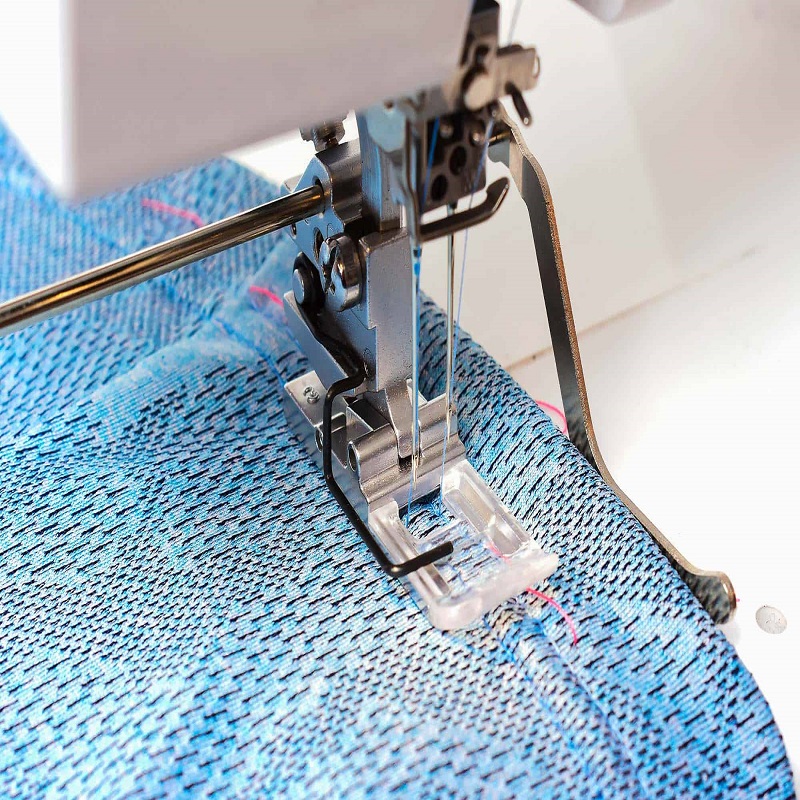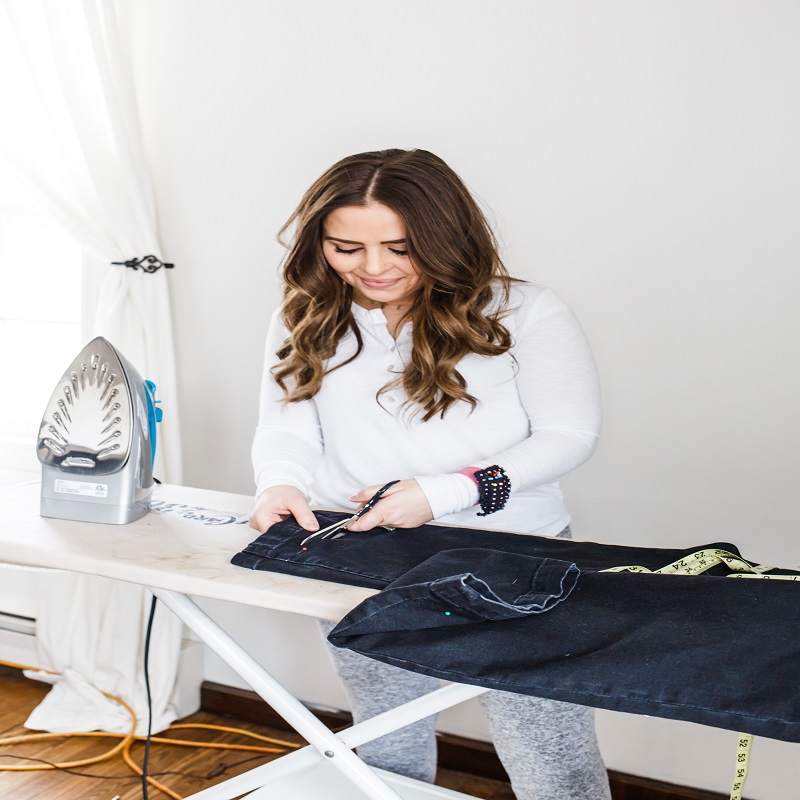How to hem pants with sewing machine? Hemming pants is a necessary skill for anyone who wants to be able to modify clothing to fit properly. With the use of a sewing machine, hemming pants can be a simple and quick task. This guide will provide you with step-by-step instructions on how to hem pants using a sewing machine, so you can achieve a professional-looking finish on your clothing.

Materials Needed
Before you begin hemming your pants, make sure you have the following materials:
- Sewing machine
- Matching thread
- Sewing pins
- Scissors
- Iron
- Measuring tape
- Seam ripper (optional)
Measure and Mark
The first step in hemming your pants is to measure and mark the new hemline. Put on the pants and fold the fabric up to the desired length. Use a measuring tape and make sure that the fold is even all the way around. Once you have determined the correct length, use sewing pins to secure the fold in place.
Prepare the Sewing Machine
Set up your sewing machine with the appropriate thread color and needle. Make sure the machine is threaded correctly and is ready to sew a straight stitch. Adjust the stitch length to a medium setting, as this will provide a secure and neat finish for the hem.
Stitch the Hem
With the prepared sewing machine and the pants inside out, begin sewing the new hemline using a straight stitch. Start at one side seam and sew all the way around the pants, removing the pins as you go. Backstitch at the beginning and end of the hem to secure the stitches.
Trim Excess Fabric
Once the hem has been stitched, trim any excess fabric from the edge to reduce bulk and create a clean finish. Leave about half an inch of fabric beyond the stitching line to prevent fraying.
Press the Hem
Turn the pants right side out and use an iron to press the hem flat. This will give the pants a professional and polished appearance, as well as help to set the stitches in place.
Optional: Blind Hem
If you prefer a more discreet hem, you can use a blind hem stitch on your sewing machine. This stitch creates a nearly invisible finish on the outside of the pants. Follow your sewing machine’s manual for instructions on how to set up and use the blind hem stitch.

Final Adjustments
Try on the pants to ensure that the new hemline is the correct length. Make any necessary adjustments before finishing the hem. If the dress pants are too long, you can trim the excess fabric and sew a new hemline. If the pants are too short, you may need to let out the hem or add a fabric extension.
Precautions for hem pants
Hemming pants is a basic and essential skill for anyone who wants to alter or customize their clothing. Whether you’re shortening a pair of new jeans or fixing up an old pair of trousers, getting the perfect hem can really make a difference in how your pants fit and look. However, it’s important to pay attention to a few key details when hemming pants to ensure that the end result is both functional and stylish.
Choosing the Right Length
The first step when hemming pants is to decide on the appropriate length. This will depend on the style of the pants, as well as your personal preference. For example, if you’re hemming a pair of dress pants, you’ll want to make sure they hit around the top of your shoes, creating a clean and professional look. On the other hand, if you’re hemming a pair of jeans, you may want to allow for a slightly longer length to create a casual and relaxed vibe.
When determining the length, it’s important to take into account the type of shoes you plan to wear with the pants. If you primarily wear flats, you may want to opt for a shorter hem, while those who often wear heels may prefer a longer length. Additionally, it can be helpful to try the pants on with various shoes and take note of how the length looks with each pair.
Measuring and Marking
Once you’ve determined the desired length for your pants, it’s time to measure and mark the hem. To ensure accuracy, it’s best to use a fabric marker or chalk to create a visible line that will guide your sewing. If you’re hemming a pair of jeans, it’s especially important to mark the hem while wearing the shoes you plan to pair with the pants. This will ensure that the length is just right and prevent any surprises once the hem is sewn.
When marking the hem, it can be helpful to use a ruler or measuring tape to ensure that the line is straight and even all the way around the pants. Taking your time with this step will pay off in the end, as a well-marked hem will make the sewing process much easier and result in a clean and polished look.

Choosing the Right Stitch
The choice of stitch is an important consideration when hemming pants, as it can impact both the look and durability of the finished hem. For most pants, a basic straight stitch is sufficient for hemming, but for certain fabrics or styles, other options may be more appropriate. If you’re hemming a pair of stretchy or knit pants, a zigzag stitch can help maintain flexibility and prevent the thread from snapping. For heavier fabrics, a reinforced or double stitch may be necessary to ensure the hem stays in place over time.
In addition to the type of stitch
The thread color can also make a big difference in how the hem looks. Matching the thread to the color of the tight pants waist will create a seamless and polished finish, while using a contrasting color can add a fun and modern touch.
Finishing Touches
After sewing the hem in place, there are a few finishing touches that can help ensure the pants look their best. If the fabric has a raw edge, it’s a good idea to trim any excess fabric and finish the edge with a zigzag stitch or serger to prevent fraying. Additionally, pressing the hem with an iron can help create a crisp and professional look.
If you’re hemming a pair of jeans or other heavy-duty pants
You may want to consider using a denim needle in your sewing machine to prevent breakage. This type of needle is designed to handle thicker fabrics and can make the sewing process much smoother.
Hemming pants is a simple yet important skill for anyone who wants to customize their clothing. By paying attention to details such as length, stitching, and finishing touches, you can ensure that the end result is both functional and stylish. With practice and attention to these tips, you can confidently hem pants to your desired length and create the perfect fit every time.
Conclusion
Hemming pants with a sewing machine is a useful skill to have, especially for those who frequently alter their clothing. With the right tools and techniques, you can achieve a professional-looking finish on your pants in no time. Follow these step-by-step instructions and practice hemming pants on different fabrics to improve your sewing skills. With patience and practice, you can become a pro at hemming pants with a sewing machine.

